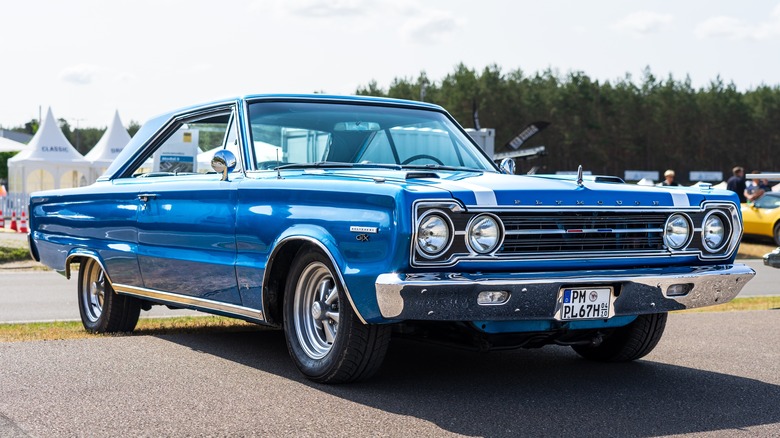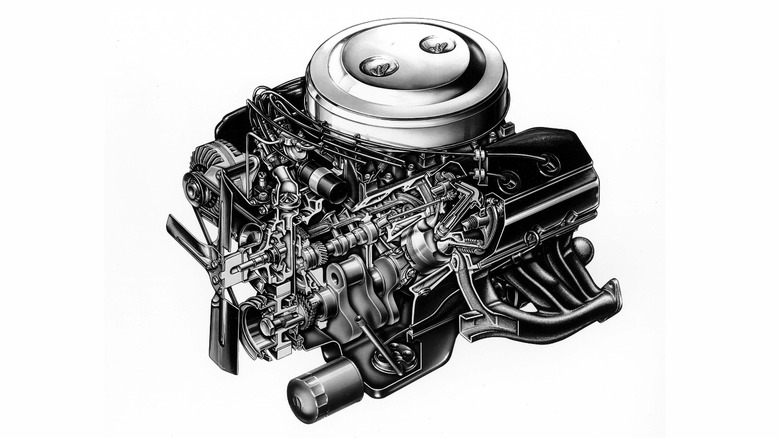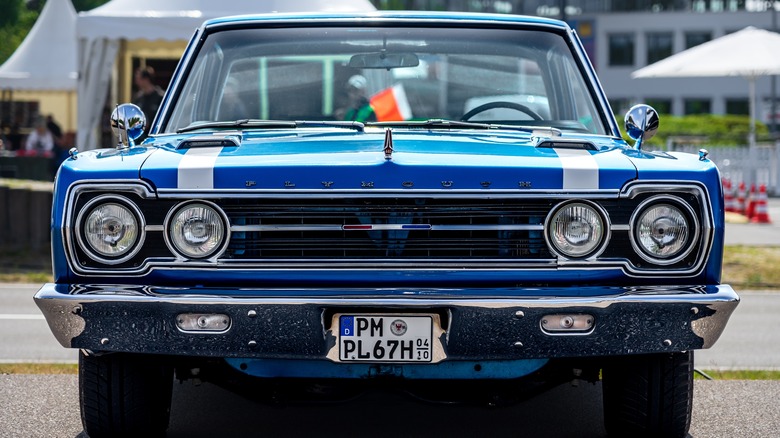How Rare Is A '67 Plymouth Belvedere GTX Hemi & What's One Go For Today?
Plymouth was a manufacturer with quite a few notable contributions to the muscle car golden era. The Road Runner epitomized the muscle ethos better than almost anything else on the street in 1968 as nothing more than a big-block V8 that happened to have a place to sit behind it. Two years later, the Superbird arrived on NASCAR super-speedways and dealers around the country, immediately becoming a symbol of both Plymouth's motorsport dominance and the lunacy of late-1960s muscle cars as a whole. Despite those two models enjoying the lion's share of praise from casual enthusiasts, neither of them would have existed without another Plymouth model that set the precedent: The Belvedere GTX.
The GTX started life as the Plymouth Belvedere, a model with a lineage that stretched back to the early 1950s. The Belvedere was initially positioned as a low-cost, full-size family car before downsizing became the norm in the early 1960s. In 1965, the Belvedere lost some length and became an intermediate-size car, right in time for muscle mayhem, which kicked off in 1964 with the introduction of the similarly-sized Pontiac GTO. With GTOs, Oldsmobile 442s, and Dodge Coronet Hemis running rampant in the streets, it only made sense for Plymouth to stuff a big block under the hood of the Belvedere and join them.
The Plymouth Belvedere GTX was born in 1967, packing either a standard 440 cubic-inch wedge V8 or an optional 426 Street Hemi. The latter was an exceptionally rare option, with Hemmings.com claiming that only 125 of approximately 12,100 GTXs (according to most sources) built in 1967 came equipped with the vaunted orange elephant. Rarity makes the cars valuable, too, with some original examples fetching over $175,000.
The standard '67 GTX engine was good, but the optional Hemi was better
When the Plymouth Belvedere GTX was introduced in 1967, it quickly gained the nickname "the gentleman's muscle car." The GTX was nearly as unassuming as the more pedestrian Belvedere off of which it was based, featuring only a smoked grille, a super-stock-derived gas cap, low-profile fiberglass hood scoops, and understated 14-inch wheels to signal the car's hot rod status. The GTX's toned-down stage presence contrasted dramatically with what was found under the hood in true wolf in sheep's clothing style.
The standard 440 cubic-inch Chrysler wedge was just gaining its bearings by the time it arrived in the '67 GTX. Mopar's B and RB big-block engines took over as Chrysler's premier V8 offerings in 1958, replacing the famous first-generation FirePower Hemi. The smaller 413 cubic-inch and 426 Max Wedges (not to be confused with the 426 Hemi) had already proven themselves to be very capable, but there's no such thing as too much displacement. So, in 1966, Chrysler bored out the 413 wedge to 440 cubic inches and began putting it in full-size sedans and coupes. In the 1967 GTX, the 440 wedge made 375 horsepower and 480 lb-ft of torque.
The optional 426 Hemi was the enthusiast's choice for the 1967 Plymouth GTX. You did have to be a rich enthusiast, though, as the option cost $546 or the equivalent of $5,091 today. That explains why only 125 GTXs got the 426 Hemi that year, making them extremely rare and sought after. The lucky owners that got those cars were privy to 425 horsepower and 490 lb-ft of torque under their right foot, although it is widely speculated that output was closer to 480-500 horsepower in actuality.
How much do '67 Plymouth Belvedere GTX Hemis go for today?
The 1967 Plymouth Belvedere GTX Hemi has a few things going for it from a collector's perspective. For one, it was the car that truly made Plymouth a serious competitor in the muscle car space, not only as a fantastic car itself but also as a progenitor of both the Road Runner and Superbird. Also important is the history associated with the 426 Hemi under its hood, which is often considered to be one of the most legendary engines of the muscle car era. The 426 Hemi embarrassed Ford and GM so thoroughly in NASCAR that it was banned in 1965 and was equally as dominant on the streets when it arrived in production models for 1966.
That's a legacy that every muscle collector wants to be a part of. The final part of the equation is rarity, and with only 125 1967 GTX Hemis built, it's safe to say it has that covered, too. With all three of those metrics taken into account, it's no surprise that original 1967 Plymouth Belvedere GTX Hemis fetch a pretty penny at auction.
According to Classic.com, the average auction price for a '67 GTX Hemi is $95,636, with prices spiking to over $175,000 for highly original, low-mileage hardtop examples. Convertibles fetch the highest premium, as only 14 Hemi-equipped 'vert's were built for the 1967 model year. There is currently a 932-mile automatic 426 convertible on sale for $329,900, which, if it sells, would be the most expensive 1967 Belvedere GTX Hemi sold at auction, as recorded by Classic.com.


